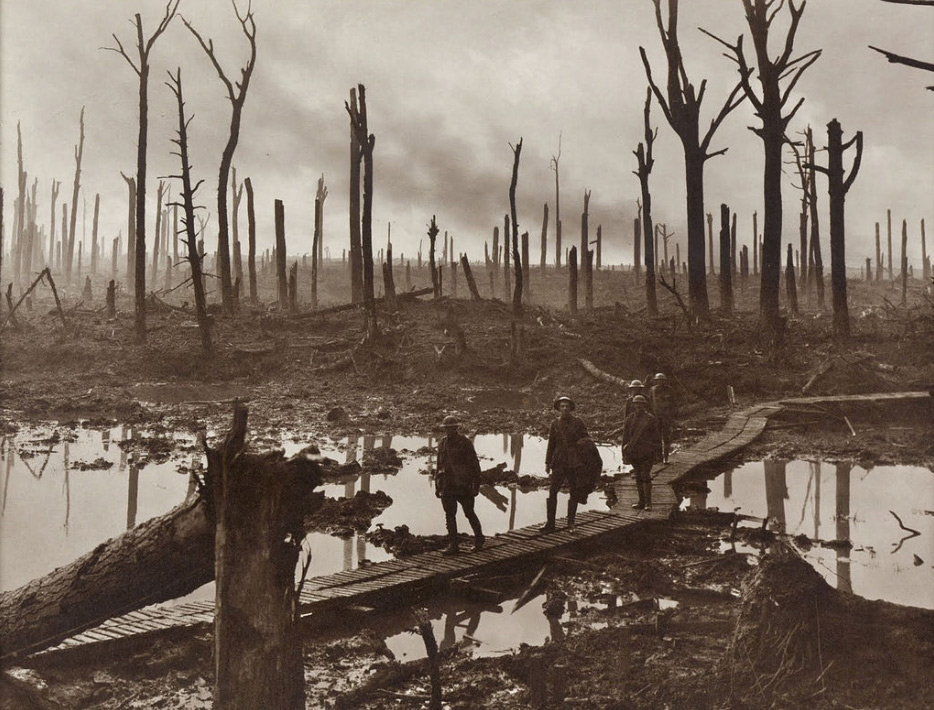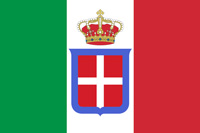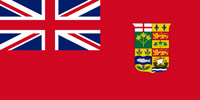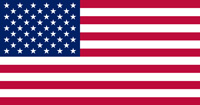World War I (1914-1918)

Battle of Passchendaele
The Battle of Passchendaele (German: Flandernschlacht, French: Deuxième Bataille des Flandres), also known as the Third Battle of Ypres, was a campaign of the First World War, fought by the Allies against the German Empire. The battle took place on the Western Front, from July to November 1917, for control of the ridges south and east of the Belgian Belgium, officially the Kingdom of Belgium, is a country in Northwestern Europe. The country as it exists today was established following the 1830 Belgian Revolution. Belgium has also been the battleground of European powers, earning the moniker the "Battlefield of Europe", a reputation reinforced in the 20th century by both world wars. city of Ypres in West Flanders, as part of a strategy decided by the Allies at conferences in November 1916 and May 1917. Passchendaele lay on the last ridge east of Ypres, 5 mi (8.0 km) from a railway junction at Roulers, which was vital to the supply system of the German
Belgium, officially the Kingdom of Belgium, is a country in Northwestern Europe. The country as it exists today was established following the 1830 Belgian Revolution. Belgium has also been the battleground of European powers, earning the moniker the "Battlefield of Europe", a reputation reinforced in the 20th century by both world wars. city of Ypres in West Flanders, as part of a strategy decided by the Allies at conferences in November 1916 and May 1917. Passchendaele lay on the last ridge east of Ypres, 5 mi (8.0 km) from a railway junction at Roulers, which was vital to the supply system of the German The German Empire, also referred to as Imperial Germany, the Second Reich, as well as simply Germany, was the period of the German Reich from the unification of Germany in 1871 until the November Revolution in 1918, when the German Reich changed its form of government from a monarchy to a republic. During its 47 years of existence, the German Empire became the industrial, technological, and scientific giant of Europe. 4th Army. The next stage of the Allied plan was an advance to Thourout–Couckelaere, to close the German-controlled railway running through Roulers and Thourout.
The German Empire, also referred to as Imperial Germany, the Second Reich, as well as simply Germany, was the period of the German Reich from the unification of Germany in 1871 until the November Revolution in 1918, when the German Reich changed its form of government from a monarchy to a republic. During its 47 years of existence, the German Empire became the industrial, technological, and scientific giant of Europe. 4th Army. The next stage of the Allied plan was an advance to Thourout–Couckelaere, to close the German-controlled railway running through Roulers and Thourout.

Australian gunners on a duckboard track in Château Wood near Hooge, 29 October 1917. Photo by Frank Hurley
Further operations and a British The British Empire, was composed of the dominions, colonies, protectorates, mandates, and other territories ruled or administered by the United Kingdom and its predecessor states. At its height it was the largest empire in history and, for over a century, was the foremost global power. By the start of the 20th century, Germany and the United States had begun to challenge Britain's economic lead. supporting attack along the Belgian coast from Nieuwpoort, combined with Operation Hush (an amphibious landing), were to have reached Bruges and then the Dutch frontier. The resistance of the 4th Army, unusually wet weather, the onset of winter and the diversion of British and French resources to Italy
The British Empire, was composed of the dominions, colonies, protectorates, mandates, and other territories ruled or administered by the United Kingdom and its predecessor states. At its height it was the largest empire in history and, for over a century, was the foremost global power. By the start of the 20th century, Germany and the United States had begun to challenge Britain's economic lead. supporting attack along the Belgian coast from Nieuwpoort, combined with Operation Hush (an amphibious landing), were to have reached Bruges and then the Dutch frontier. The resistance of the 4th Army, unusually wet weather, the onset of winter and the diversion of British and French resources to Italy The Kingdom of Italy was a state that existed from 1861, when Victor Emmanuel II of Sardinia was proclaimed King of Italy, until 1946. The state resulted from a decades-long process, the Risorgimento, of consolidating the different states of the Italian Peninsula into a single state. That process was influenced by the Savoy-led Kingdom of Sardinia, which can be considered Italy's legal predecessor state., following the Austro-German victory at the Battle of Caporetto (24 October – 19 November), enabled the Germans to avoid a general withdrawal, which had seemed inevitable in early October. The campaign ended in November, when the Canadian
The Kingdom of Italy was a state that existed from 1861, when Victor Emmanuel II of Sardinia was proclaimed King of Italy, until 1946. The state resulted from a decades-long process, the Risorgimento, of consolidating the different states of the Italian Peninsula into a single state. That process was influenced by the Savoy-led Kingdom of Sardinia, which can be considered Italy's legal predecessor state., following the Austro-German victory at the Battle of Caporetto (24 October – 19 November), enabled the Germans to avoid a general withdrawal, which had seemed inevitable in early October. The campaign ended in November, when the Canadian Canada is a country in North America. Because Britain still maintained control of Canada's foreign affairs under the British North America Act, 1867, its declaration of war in 1914 automatically brought Canada into World War I. Volunteers sent to the Western Front later became part of the Canadian Corps, which played a substantial role in the Battle of Vimy Ridge and other major engagements of the war. Corps captured Passchendaele, apart from local attacks in December and in early 1918. The Battle of the Lys and the Fifth Battle of Ypres were fought before the Allies occupied the Belgian coast and reached the Dutch frontier.
Canada is a country in North America. Because Britain still maintained control of Canada's foreign affairs under the British North America Act, 1867, its declaration of war in 1914 automatically brought Canada into World War I. Volunteers sent to the Western Front later became part of the Canadian Corps, which played a substantial role in the Battle of Vimy Ridge and other major engagements of the war. Corps captured Passchendaele, apart from local attacks in December and in early 1918. The Battle of the Lys and the Fifth Battle of Ypres were fought before the Allies occupied the Belgian coast and reached the Dutch frontier.
A campaign in Flanders was controversial in 1917 and has remained so. The British Prime Minister, David Lloyd George, opposed the offensive, as did General Ferdinand Foch the French Chief of the General Staff. Field Marshal Sir Douglas Haig, commanding the British Expeditionary Force (BEF), did not receive approval for the Flanders operation from the War Cabinet until 25 July. Matters of dispute by the participants, writers and historians since the war, have included the wisdom of pursuing an offensive strategy in the wake of the Nivelle Offensive, rather than waiting for the arrival of the American The United States of America (U.S.A. or USA), commonly known as the United States (U.S. or US) or America, is a country in North America. It is the world's third-largest country by both land and total area. The United States shares land borders with Canada to its north and with Mexico to its south. The national capital is Washington, D.C., and the most populous city and financial center is New York City. Expeditionary Force (AEF) in France
The United States of America (U.S.A. or USA), commonly known as the United States (U.S. or US) or America, is a country in North America. It is the world's third-largest country by both land and total area. The United States shares land borders with Canada to its north and with Mexico to its south. The national capital is Washington, D.C., and the most populous city and financial center is New York City. Expeditionary Force (AEF) in France French Third Republic was the system of government adopted in France from 4 September 1870, when the Second French Empire collapsed during the Franco-Prussian War, until 10 July 1940, after the Fall of France during World War II led to the formation of the Vichy government. During the 19th and 20th centuries, the French colonial empire was the second largest colonial empire in the world only behind the British Empire. .
French Third Republic was the system of government adopted in France from 4 September 1870, when the Second French Empire collapsed during the Franco-Prussian War, until 10 July 1940, after the Fall of France during World War II led to the formation of the Vichy government. During the 19th and 20th centuries, the French colonial empire was the second largest colonial empire in the world only behind the British Empire. .
The choice of Flanders over areas further south or the Italian front, the climate and weather in Flanders, the choice of General Hubert Gough and the Fifth Army to conduct the offensive, debates over the nature of the opening attack and between advocates of shallow and deeper objectives, have also been controversial. The passage of time between the Battle of Messines (7–14 June) and the Battle of Pilckem Ridge (31 July) the opening move of the Third Battle of Ypres), the extent to which the internal troubles of the French armies motivated British persistence with the offensive, the effect of the weather, the decision to continue the offensive in October and the human cost of the campaign on the soldiers of the German and British armies, have also been argued over ever since.
Aftermath
In a German General Staff publication, it was written that "Germany had been brought near to certain destruction (sicheren Untergang) by the Flanders battle of 1917". In his Memoirs of 1938, Lloyd George wrote, "Passchendaele was indeed one of the greatest disasters of the war ... No soldier of any intelligence now defends this senseless campaign ...". In 1939, G. C. Wynne wrote that the British had eventually reached Passchendaele Ridge and captured Flandern I Stellung; beyond them were Flandern II and Flandern III (which was nearing completion). The German submarine bases on the coast had not been captured but the objective of diverting the Germans from the French further south, while they recovered from the Nivelle Offensive in April, had succeeded. In 1997, Griffith wrote that the bite and hold system kept moving until November, because the BEF had developed a workable system of offensive tactics, against which the Germans ultimately had no answer. A decade later, Sheldon wrote that relative casualty figures were irrelevant, because the German army could not afford great numbers of losses or to lose the initiative by being compelled to fight another defensive battle, on ground of the Allies' choosing. The Third Battle of Ypres pinned the German army to Flanders and caused unsustainable casualties.
At a conference on 13 October, a scheme of the Third Army for an attack in mid-November was discussed. General Julian Byng, commander of the Third Army, wanted the operations at Ypres to continue, to hold German troops in Flanders. The Battle of Cambrai began on 20 November, when the British breached the first two parts of the Hindenburg Line, in the first successful mass use of tanks in a combined arms operation. The experience of the failure to contain the British attacks at Ypres and the drastic reduction in areas of the western front that could be considered "quiet" after the tank and artillery surprise at Cambrai, left the OHL with little choice but to return to a strategy of decisive victory in 1918. On 24 October, the Austro-German 14th Army (General der Infanterie Otto von Below), attacked the Italian Second Army on the Isonzo, at the Battle of Caporetto and in 18 days, inflicted casualties of 650,000 men and 3,000 guns. In fear that Italy might be put out of the war, the French and British Governments offered reinforcements. British and French troops were swiftly moved from 10 November – 12 December but the diversion of resources from the BEF forced Haig to conclude the Third Battle of Ypres short of Westrozebeke, the last substantial British attack being made on 10 November.
HISTORY

RESOURCES
This article uses material from the Wikipedia articles "World War", "World War I", and "Battle of Passchendaele", which is released under the Creative Commons Attribution-Share-Alike License 3.0.
© Stories Preschool. All Rights Reserved.










